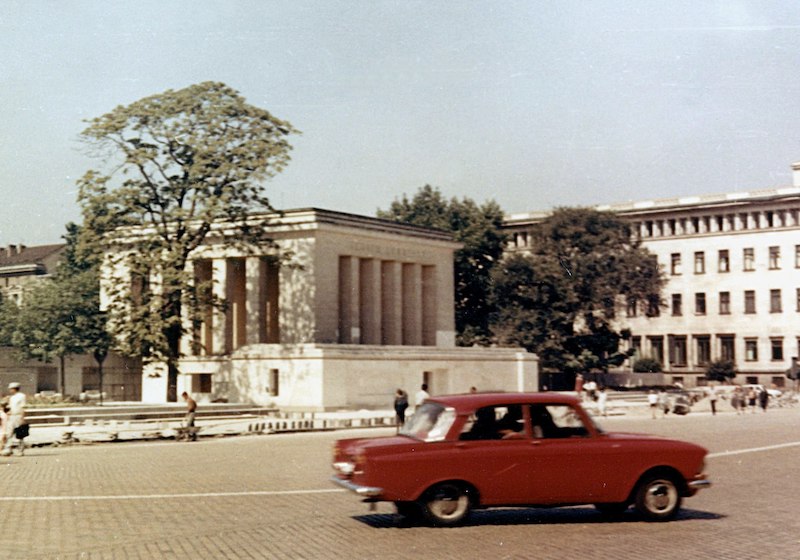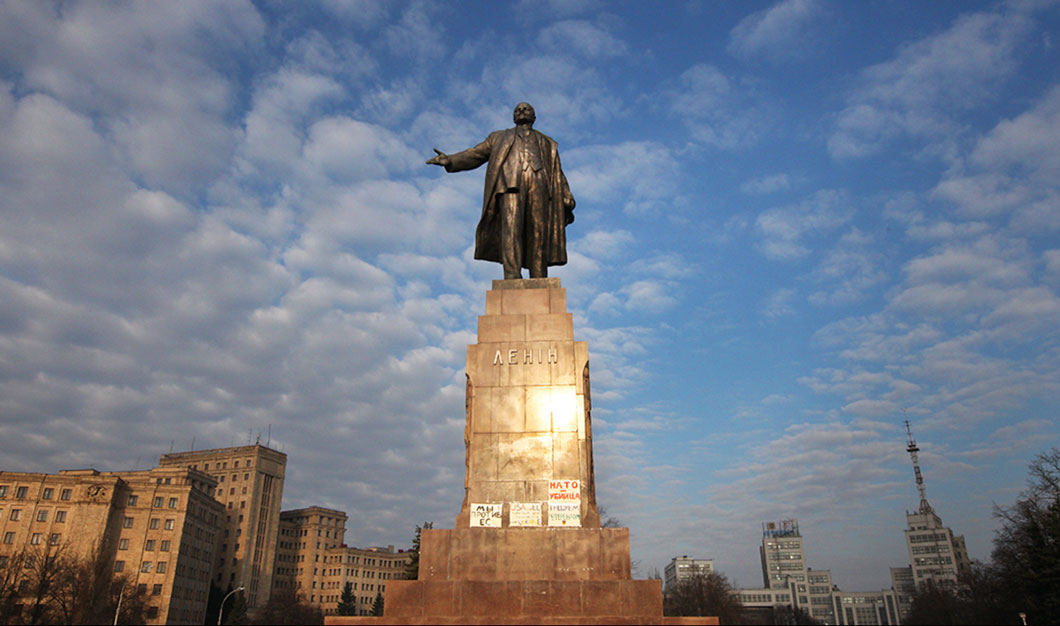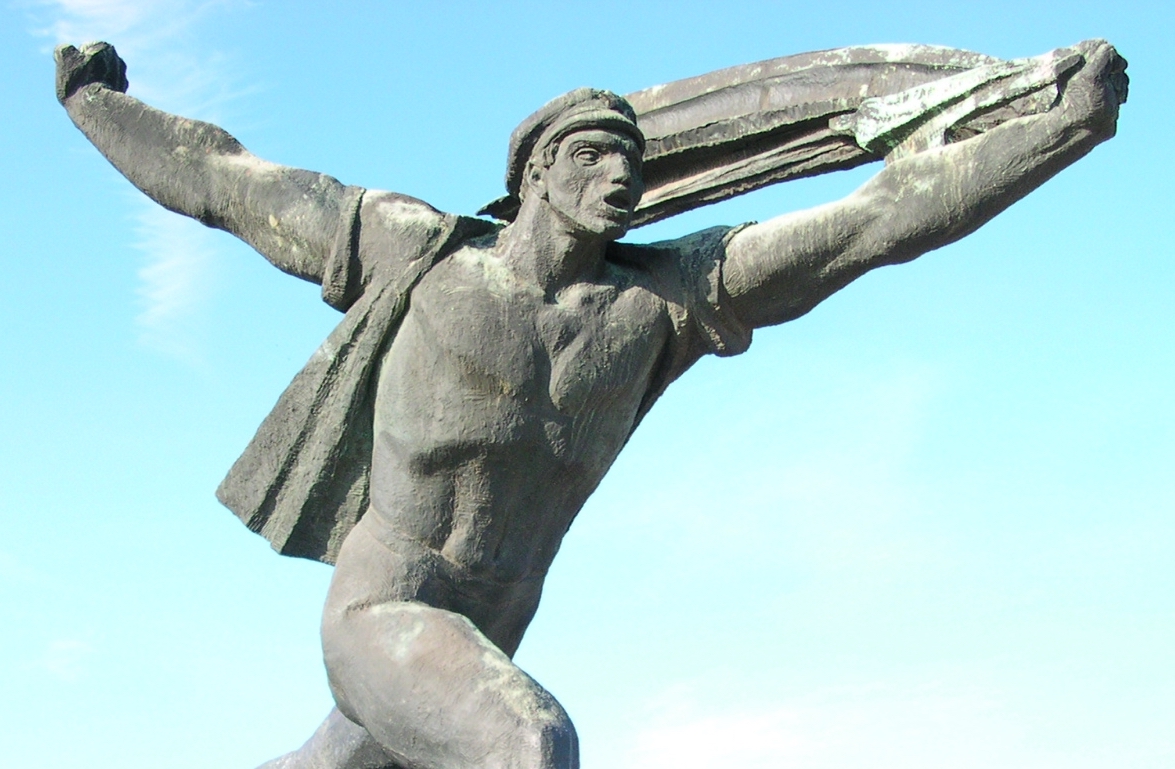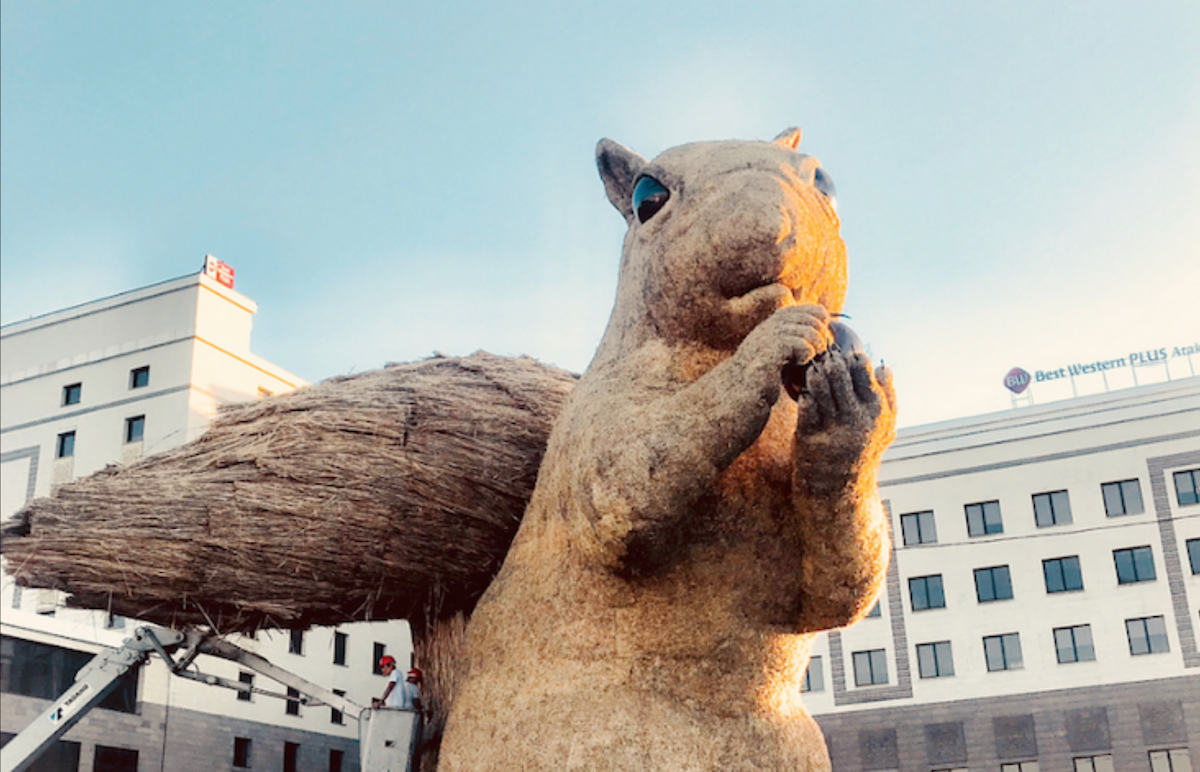Why dynamite couldn’t destroy the legacy of Bulgaria’s communist mausoleum

For half a century, the mausoleum of Bulgaria’s first communist leader, Georgi Dimitrov, dominated Sofia’s central square. With its white marble walls and columns, it evoked an ancient temple stripped of all ornament and reduced to pure monumentalism. Distinctly Soviet brutalist in style, it marked an ideological break with the Western European architecture of the old city centre, particularly the Austro-Hungarian Châteauesque of the Royal Palace across the street. For decades, ceremonial guards stood at attention before the wreath-covered gates of Dimitrov’s tomb, overseen by the shining red star hoisted on top of the Party Headquarters. Today, the star has been replaced by the Bulgarian flag, and the Royal Palace is once again the centrepiece of the square. All that remains on the mausoleum is its stylobate – an empty concrete platform and a rendezvous spot popular among Sofia’s youth. No plaque indicates the history or the significance of what once stood there.
Today, 21 years after its messy demolition, the mausoleum remains modern Bulgaria’s most politically-charged structure
The mark that the mausoleum left on the Bulgarian psyche, however, still resonates. Constructed as a symbol of a new political order, the mausoleum was paramount in state propaganda. The details of its construction and operation don’t only reveal the history of a building, but also the essence of the regime behind its utopian façade. Today, 21 years after its messy demolition, the mausoleum remains modern Bulgaria’s most politically-charged structure — a reference point for public sentiment on the socialist era, and the disillusionment which followed the painful transition to democracy.
The history of the mausoleum starts on 2 June 1949, when Georgi Dimitrov died unexpectedly in Moscow. Dimitrov had attracted international renown for successfully defending himself and his communist beliefs before a Nazi court in Leipzig after he was wrongly accused of involvement in the 1933 Reichstag fire. His fame led him to become head of the Comintern and brought him into Stalin’s inner circles. After the Second World War, he took up the position of General Secretary of the Bulgarian Communist Party, and was hailed as the architect of the new People’s Republic. Mere hours after his death, the Central Committee made a unanimous decision to embalm him — an honour until then only enjoyed by Lenin.
But rather than reflecting Dimitrov’s stature, the decision was instead indicative of Bulgaria’s position as a satellite of the USSR. Despite the official praise of Dimitrov as a communist mastermind, he was little more than a convenient figure for Stalin, who ultimately pulled the strings of the new regime. Bulgaria directly imported a ready-made Stalinist government model, along with its ideology and symbolic systems. Dimitrov’s embalming was no different.
Temporarily embalmed and covered with wreaths, Dimitrov’s body was loaded on a train from Moscow to Sofia. Among the passengers was a Soviet Politburo delegation, as well as father and son Boris and Ilya Zbarsky, two of the handful of career embalmers who had mummified Lenin and whose team would later employ the same technology on virtually every communist leader’s embalming, except for Mao’s. In his memoirs, Ilya Zbarsky recounts the difficulties surrounding Lenin’s death in 1924: years of bureaucratic struggles and debates were needed between scientists and politicians to both invent the embalming technology, and decide upon its ideological function. By 1949, however, the technique was already well in place and ready for export. Upon his arrival in Sofia, Zbarsky was surprised to find a mausoleum oddly reminiscent of the one in the Red Square. More astonishingly, it had been completed less than six days after Dimitrov’s death. If it had taken almost a decade to determine the fate of Lenin’s corpse, then the Bulgarian leader was taken from his deathbed and injected straight into the heart of a propaganda machine. Erected opposite the old Royal Palace, the monument was a statement: the symbolic locus of a new political order. From its platform, Bulgarian leaders would oversee national celebrations, conduct diplomatic events, and deliver speeches to the masses below.
Dimitrov’s funeral. Image: Bulgarian State Archives
But the building also served an ideological function. Like Lenin, Dimitrov was the core of a communist foundation myth. The country’s media and education system constructed a deity, whose heroism, genius, and empathy came to embody the Party. He was in melodramas and children’s stories, his portrait hung above every petty official’s desk, and school trips invariably ended with a visit to his tomb. Contemporaries recall experiencing an air of ceremonial bereavement upon entering the building and walking through a granite corridor decorated with revolutionary motifs. In the main chamber, in a crystal sarcophagus and theatrical lighting, lay the chieftain and teacher of the nation. At once conveying a saintly aura and a tangible presence – inextricable from the propaganda permeating all aspects of Bulgarian life – the mummy functioned as a semiotic bridge between the mythical and the real. For the Party, immortalising Dimitrov was a means of legitimising political power.
The masses saw their chieftain suspended in eternal undisturbed sleep. What they did not know was that a team of scientists maintained the corpse on a daily basis
The masses saw their chieftain suspended in eternal undisturbed sleep. What they did not know was that a team of scientists maintained the corpse on a daily basis. In 1991, Professor Peter Galabov, head of the Bulgarian embalming team, described his work. Twice a week, a lift lowered the sarcophagus into a laboratory hidden under the mausoleum. In a sterile, morgue-like room, scientists hydrated parts of the body that would dry up due to the air and light exposure. Makeup was periodically applied to give the face a natural look. Once every 18 months, the mausoleum would close for re-embalming. This involved stripping the mummy and soaking it in formalin for a month. The body was then hollowed out and re-stuffed with cotton infused with embalming fluid. Skin and muscle samples were analysed for abnormalities. After the procedure, the body was put in latex overalls filled with liquid and tightened around the wrists and neck to prevent leakage. Then, revamped and suited up, the leader re-emerged for public worship.
A commemoration of Dimitrov in eastern Germany, 1949. Dimitrov, who lived in Germany for several years, had been accused of involvement in the Reichstag Fire by the Nazis in 1933. Image: Deutsche Fotothek under a CC licence
In many ways, the illusion of the mausoleum and the unseen effort that went into maintaining it was also true of the regime itself. Behind the official narrative of progress and stability was an unsustainable economy and brewing public discontent. Irrational government spending, a growing trade deficit, and mounting foreign debt led to a series of financial crises which were only averted through Soviet bailouts and at the cost of the entire national gold reserve. Against the backdrop of discernible material shortages, the propaganda machine worked at full steam, boasting of socialist prosperity.
The lack of reliable information gave rise to rumours and jokes about the mausoleum which reveal much about people’s attitudes towards the regime at the time. Some speculated wrongly that Dimitrov’s body was a wax sculpture – yet another ideological deception. Others, more cynically inclined, noticed that politicians would often disappear from the platform during parades, and joked that officials went down to grab drinks with the dead chieftain in a secret bar. This was ironically partially true: the structure indeed housed a furnished room offering refreshments to Politburo members. The symbolism of the monument was also topical among jokesters who imagined Bulgarian leaders — ever obedient to their Soviet comrades — digging a tunnel from Dimitrov’s tomb to that of Lenin in Moscow. A classified tunnel network did in fact exist. But the symbolic heart of the regime pumped through underground arteries into the Party Headquarters, the Courthouse, and the National Bank.
Naturally, the fall of Bulgaria’s communist regime in 1989 intensified the political charge of the mausoleum. It became the site of protests, and was frequently adorned with anti-establishment graffiti. Playing on popular sentiment, a rock musician blew up a paper model of the monument during one of the first “democratic” concerts in the square. A year later, Dimitrov’s body was removed and buried in a public cemetery.
The demolition of the mausoleum began on 21 August 1999. Ministers, TV crews, and citizens gathered to witness what was to be a symbolic break with the past. The newly incorporated private company, Explosive Progress Ltd, was commissioned for the job and, at 14:37, the city centre shook from a controlled detonation. But the structure only leaned slightly. It would withstand four more explosions over the course of a full week before finally giving in to a team of bulldozers. Ironically, the mausoleum’s removal took longer than its construction.
Instead of offering a catharsis, the demolition also exposed the deep divides among Bulgarians. Many regarded it as a populist move preceding the elections. Others saw it as a farce and a symptom of politicians’ inadequacies. Some maintained that the demolition was an act of vandalism and that the monument should have been preserved for history. Ultimately, after 10 years of post-communist “transition”, the only thing that united Bulgarians was a disillusionment with the promises of change and a deep political apathy. Both feelings linger to this day.
At its core, political power in Bulgaria did not change hands. As protestors took to the streets to demand freedom and democracy, the Central Committee planned the transformation of comrades into businessmen and their respective allotment of the upcoming capitalist economy. That transformation could only happen under an anti-communist slogan. Today, as the country struggles to uncover itself from the socio-political sediments of the past, the mausoleum’s ceremonial guard instead stands in front of the presidency building. The embalming chamber, with its web of connecting tunnels linking various government buildings, still remains buried under the city centre.
The Dimitrov Mausoleum in 1968. Image: Fotopan A/R under a CC licence
For 21 years, the former site of the mausoleum has been an empty concrete platform, yet controversy remains. Its demolition is invariably brought up in current debates surrounding the legacy and future of other socialist monuments in the country. The fate of the underground chambers was also uncertain for many years. Despite popular calls for the construction of a museum of totalitarianism, the government washed its hands and approved the conversion (in the indefinite future) of the tunnels into a gallery of contemporary art – a decisively ahistorical compromise. Today, Bulgaria remains the only former Eastern Bloc country without a museum of communism. It reflects not so much the unwillingness of politicians, but more the inability of those who elect them to reach a consensus on the appraisal of the past. Until they do, the mausoleum is sure to loom large in Bulgarian history — even if it no longer stands on the streets of Sofia.
Note from the editor: Given Georgi Dimitrov’s death in 1949, it is unlikely that the above video was filmed in 1958, as specified by British Pathé. The editorial team believe that this is an error from the company’s YouTube channel, and that the footage was in fact filmed in 1948.


